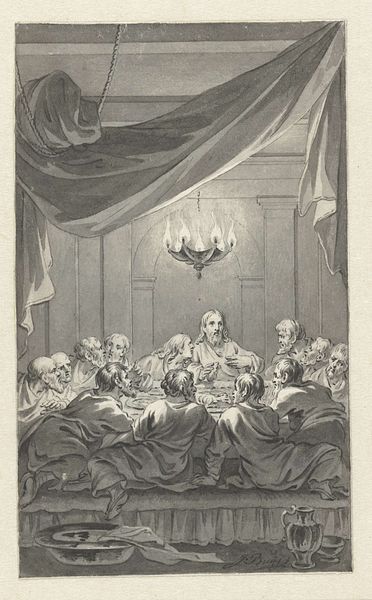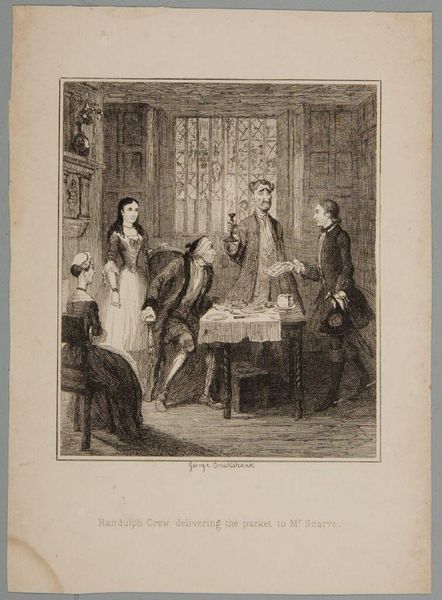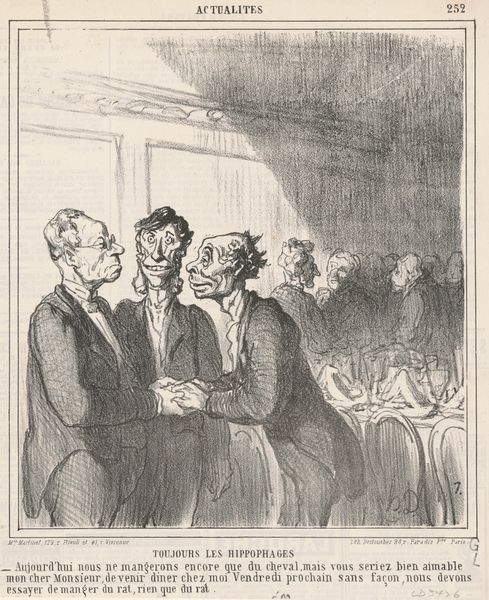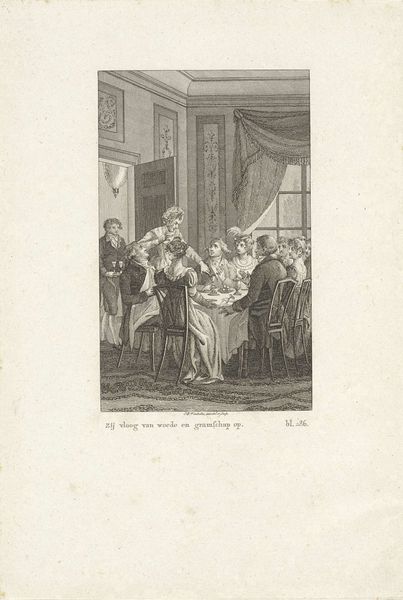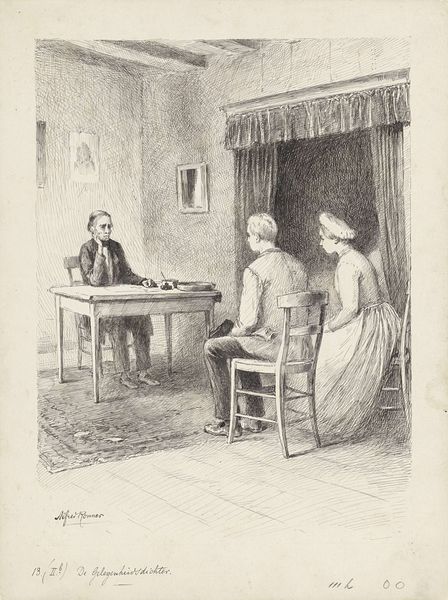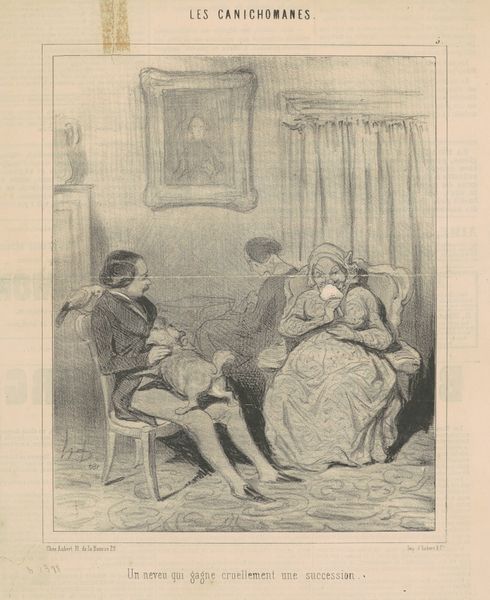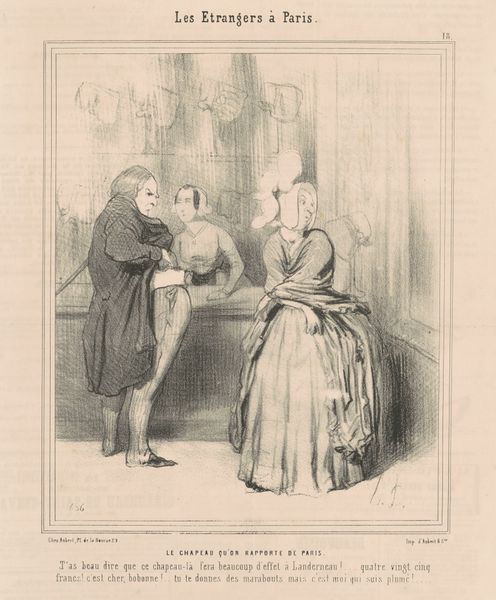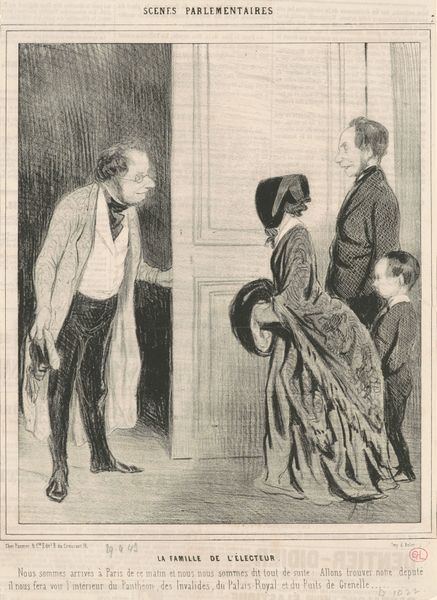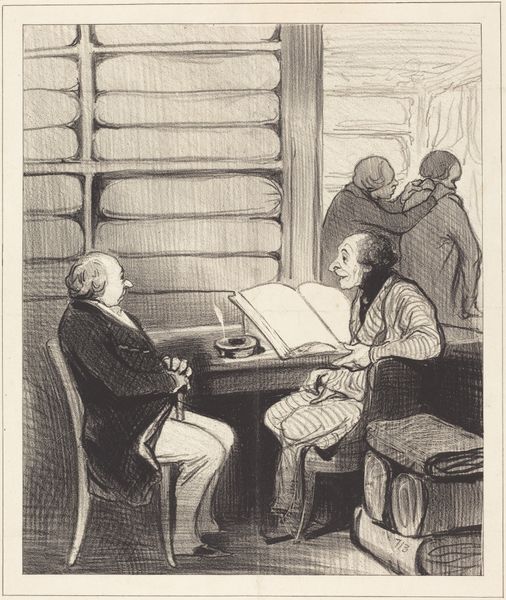
drawing, lithograph, print
#
portrait
#
drawing
#
16_19th-century
#
narrative-art
#
lithograph
# print
#
caricature
#
figuration
#
group-portraits
#
romanticism
#
19th century
#
genre-painting
Copyright: National Gallery of Art: CC0 1.0
Curator: "Lecteur du moniteur," or "Reader of the Monitor," is the title of this lithograph crafted by Honoré Daumier in the mid-19th century. A scene of bourgeois leisure unfolds before us. What's your immediate take? Editor: There's an unsettling stillness. It feels like a tableau vivant, more staged than sincere, despite the supposedly intimate domestic setting. All eyes are directed—ostensibly—at the reader, but I wonder, what's truly being consumed here? Curator: Look closely at Daumier’s technique. Notice the strategic hatching that builds volume and the clever deployment of light and shadow. See how he directs our focus through stark contrast, especially around the reader's face and the postures of each figure, which, when taken together, compose a narrative—one could see these choices alone and deduce some narrative regarding their characters and relationships with each other. Editor: And it's a narrative steeped in the socio-political realities of 19th-century France. The title points us directly to "Le Moniteur Universel," the official government newspaper. Who had the time and resources for such leisure and what messages are those with privilege interested in spreading? I wonder who has control of the story both in and out of the picture's frame. It isn’t an accident to think about the figures that populate it. Is she actually sharing her husband's discourse or is she strategically shaping public perception in her home? Curator: A fair assessment. Note how Daumier complicates the classical portrait format—not just visually but conceptually—while his contemporary Eugène Delacroix uses similarly intimate portraits to advance romantic ideas about individualism, Daumier focuses on the performance of social roles. His artistic practice often involved critiquing or poking fun at the norms of the establishment. Editor: Exactly. Are we meant to see this as a benign domestic scene or a calculated performance? The almost voyeuristic quality, the static poses… it’s all designed to unsettle and make us question what power dynamics are at work. It even looks a bit haunting. It all hints at a subtext beneath the surface, something perhaps sinister lurking within these polite interactions. Curator: An interesting perspective to keep in mind! Overall, the work strikes a balance between formal execution and social commentary. It's hard to dismiss how the visual organization alone gives shape to our interpretation, Editor: It serves as a potent reminder that even seemingly private moments can be politically charged sites of negotiation, resistance, or reaffirmation, that remain worthy of continued interrogation.
Comments
No comments
Be the first to comment and join the conversation on the ultimate creative platform.


